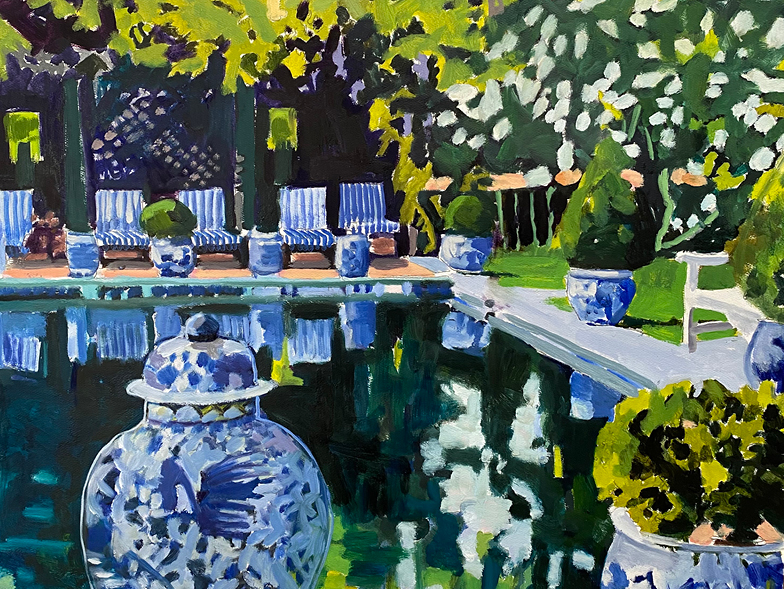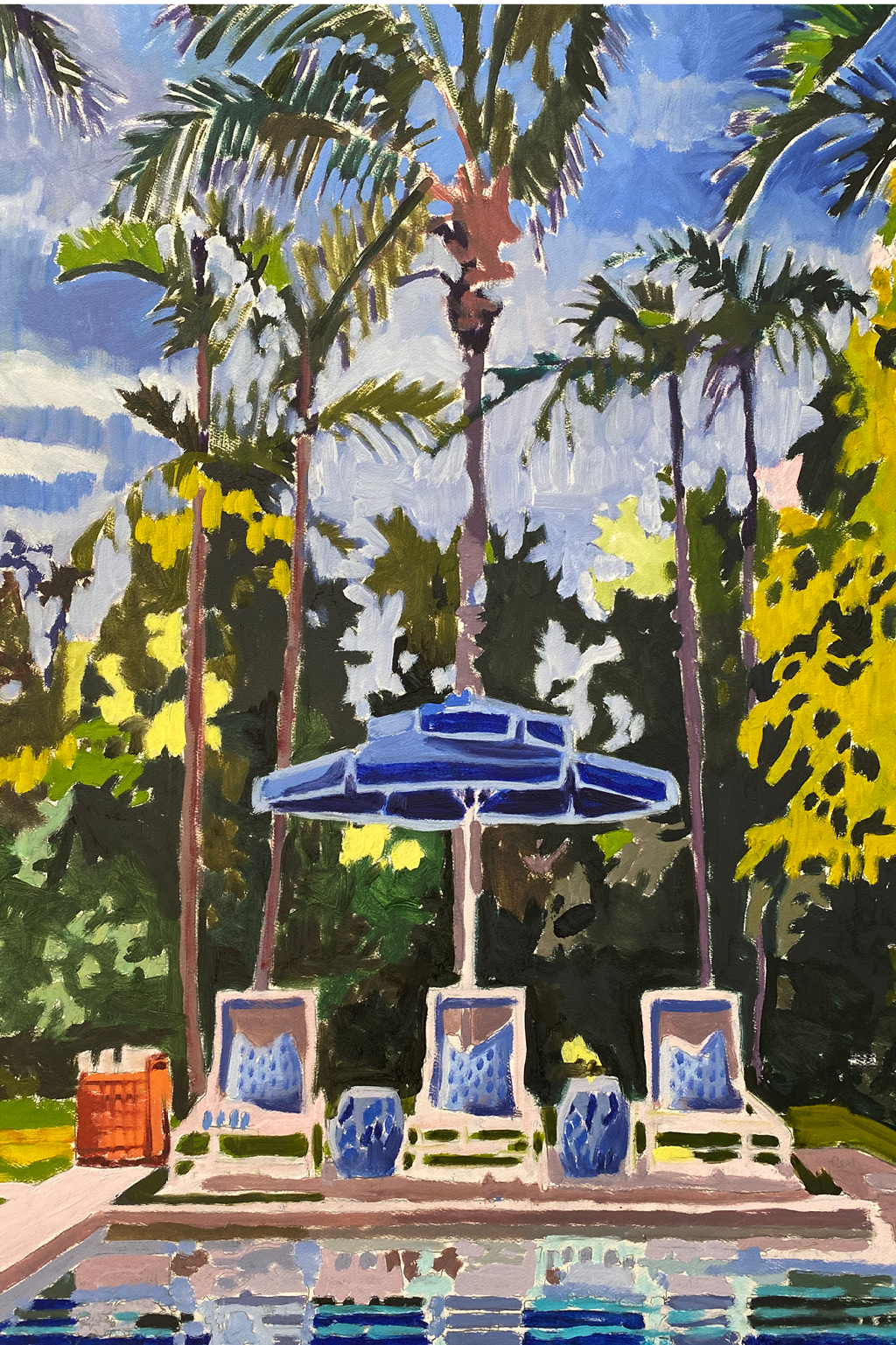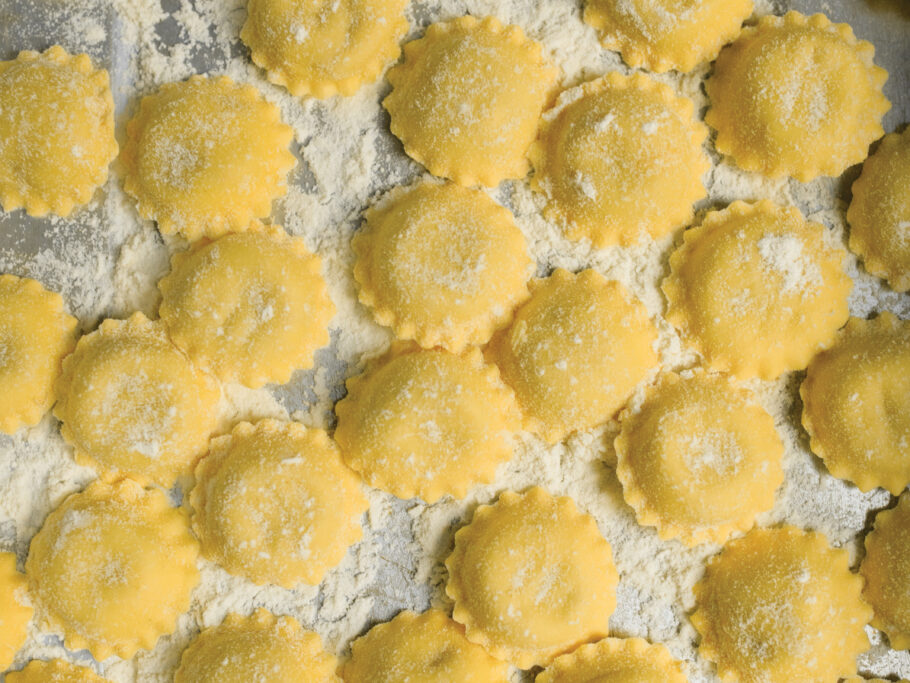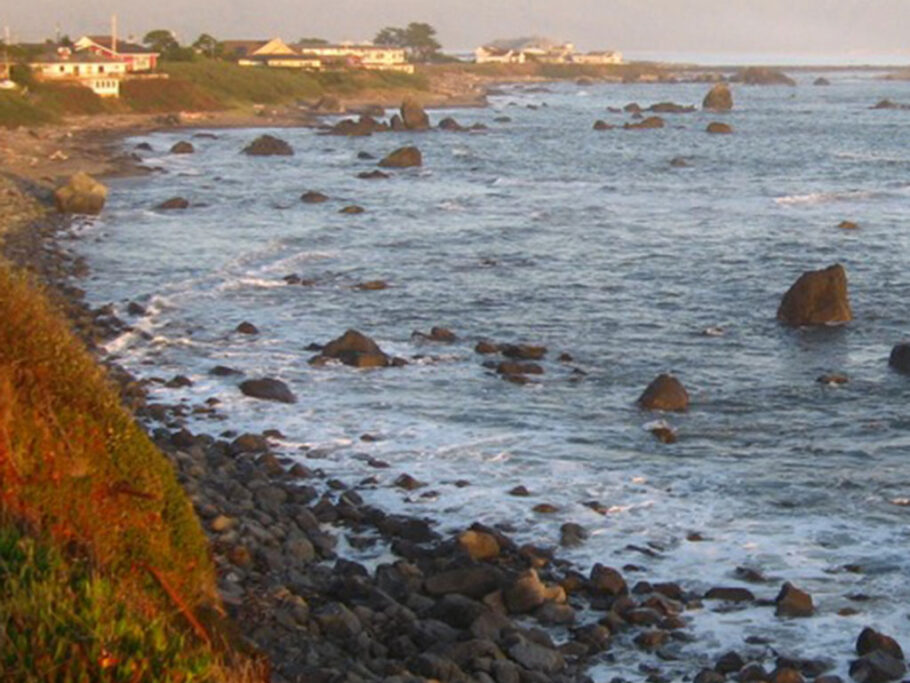Painting the Common Thread
Drawing inspiration from movies, books, current events, and kindred spirits, artist Pamela Hoffmeister publicly explores the evolution of her painting and self-confidence in art.

What did the path to becoming an artist look like for you?
Painting seduced me. It was a lover I couldn’t stay away from. I started college as a ceramics major, but I kept walking by the painting studio and loved the smell. I couldn’t resist taking a few drawing classes; drawing was my gateway. I thought I would just dabble, but I ended up getting a degree in painting and drawing. However, I learned gobs of art history and very little technique; at the time, it was all about conceptual art. The professors talked all about why you would make a painting but not exactly how to make a painting. So I felt like an artist in theory only. Occasionally, I would make a painting that really worked, but I didn’t understand how or why. After receiving my BFA, for ten years I hunted for living painters who I loved and figured out how to study under them or take workshops from them.
Do you have an essential philosophy or life outlook that guides your art?
My essential belief is that everyone’s art inspires everyone else’s art. Work begets work. And there’s room for every single one of us.
What mediums have you experimented with? What is your preferred medium? Why?
I’ve worked in watercolor, printmaking, oils, pastels, and charcoals, but I love oil paint the most. I love the smell and the buttery texture.
How long did it take you to find your style? Do you have any advice for artists still going through that process?
I’ve always loved loose gestural drawing and painting, but at around age fifty I began to develop the confidence to paint like myself. Before that, I was always trying to paint like some historical or established artist because I was scared that my work wasn’t good enough. That being said, some days I still show up in my studio and feel like I don’t know my style or what I’m doing or if I did good work. But I do it anyway, and then I walk away. I’m learning that showing up and doing the work is enough. So, if I had any advice today, it would be to keep going and trust yourself, even if you have no idea why you paint the way you do.

How do you decide what to paint? What places or scenes tend to catch your eye?
I follow a mental thread that toggles between what I am thinking about and reading about and what is going on in the world around me. For example, when Mary Oliver died, I went back and read my favorite poems by her, wrote about them, and painted her portrait. When Mario Buatta’s belongings were being auctioned, I made a painting of his interior with a wall full of dog portraits. As the seasons change, I ponder, write, and paint my way through them.
The things that catch my eye are beauty and strong value structure [the lightness or darkness of a color]. There’s a saying, “Value does all the work and color gets all the credit.”
What lessons have you learned along your journey so far?
Personally, I wish I’d accepted that I’m an introvert and hadn’t wasted time and energy pretending to be an extrovert. From a business perspective, be super nice to everyone and get that money.
Do you experience artist’s block?
Yes. Sometimes I have to just keep going, and sometimes I have to stay in bed and watch the movie The Station Agent. I need to wallow in someone else’s good art.

How would you describe your approach to Instagram?
I strive to be vulnerable and funny. I want to encourage people, especially women. My Instagram account is a direct reflection of my process. When I wake up in the morning, I might look at my phone and see what’s going on in the world, and then I write in my journal. I look at images I’ve been considering painting. Somehow what I’ve been writing and ruminating about dovetails with the image I decide to paint. I go out to my studio, and I paint. And then, in the evening, I post a picture of that painting, and I’ll caption it with some version of what I wrote in my journal that morning.
You wrote about having an epiphany regarding holidays and how much work they are for the person hosting. Have you had epiphanies of letting go of other responsibilities in your pursuit of fine art?
Yes. I have a sign in my studio that says: “Decide what you want in life and let go of everything that isn’t that.”
What is your studio setup? When do you feel most productive?
Five years ago, I built a studio so I could have a room of my own. It’s a game changer. I feel most productive when I am home and my life is habitual. My favorite days are spent writing, painting, hiking, and closing them out with yoga.
You’ve talked about the joy of discovering kindred spirits in the universe. What intrigues you about this concept? What kinds of people do you feel a kinship with?
Sometimes I feel lonely in my extreme longing for beauty and meaning. Discovering that other people feel this way makes me feel less alone. There are filmmakers, interior designers, writers, and artists of every stripe who feel the way I do. I feel a connection to a beautiful garden or an especially quirky article in the New York Times. I firmly believe that in this life’s journey, we need others to accompany us. But they don’t have to be in close proximity—you don’t even have to know them. They don’t even have to live in the same historical time period! Knowing they’re out there is enough. People who are unabashedly themselves thrill me.
If your life were made into a movie, who would play you? How would you want to be portrayed? What do you hope the overarching message of the movie would be?
Anjelica Huston. I’d want to be portrayed like her character in Wes Anderson’s The Darjeeling Limited. When she discharged all her motherly duties, she claimed her life back. I’d want the movie to show I have an abundance mentality; I encourage others, especially younger artists and other women.
For more info, follow @pchoff on Instagram.























